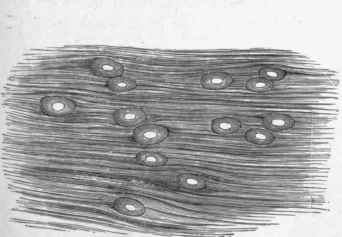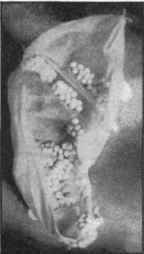III. Cestoda. Tape-Worms
Description
This section is from the book "A Manual Of Pathology", by Joseph Coats, Lewis K. Sutherland. Also available from Amazon: A Manual Of Pathology.
III. Cestoda. Tape-Worms
These are in the mature state long flat worms, without mouth or alimentary canal. Anteriorly there is a head furnished with some apparatus for attaching itself to the host. Behind the head and neck the worm forms a series of segments called Proglottides, each of which develops a bi-sexual apparatus, and is, so far, a complete individual. The adult worm or Strobilus is therefore a colony of individuals. The worm inhabits the alimentary canal, and apparently occurs only in vertebrate animals. Besides this adult form there is an intermediate immature form, called the Scolex, which occurs in the tissues of animals. The scolex has a head like that of the mature worm, and generally possesses a sac or cyst into which it can retire. In the case of many of the tapeworms the scolex form has been described independently of the adult, and often in ignorance of the connection, under the name of Bladder-worms. There is thus a bladder-worm for each tape-worm. The bladder-worms of the various tape-worms are divisible into three principal forms, namely, Cysticercus, in which each cyst has a single head, and is therefore small in size (see Fig. 170); Coenurus, in which the bladder, although single, develops several heads (see Fig. 171); and Echinococcus or hydatids, in which there are complicated vesicles, and the heads are grouped inside secondary cysts.

Fig. 170. - Cysticerci of taenia solium In muscle. Natural size. (Leuckart).

Fig. 171. - Cienurus of taenia serialia from peritoneal cavity of a rabbit. Many heads in a single cyst. (Natural size).
There are representatives of two families of tape-worms met with in man, namely, Taenia and Bothriocephalus. To prevent repetition, the general anatomical features are somewhat fully given in the description of the form taken first.
Continue to:


